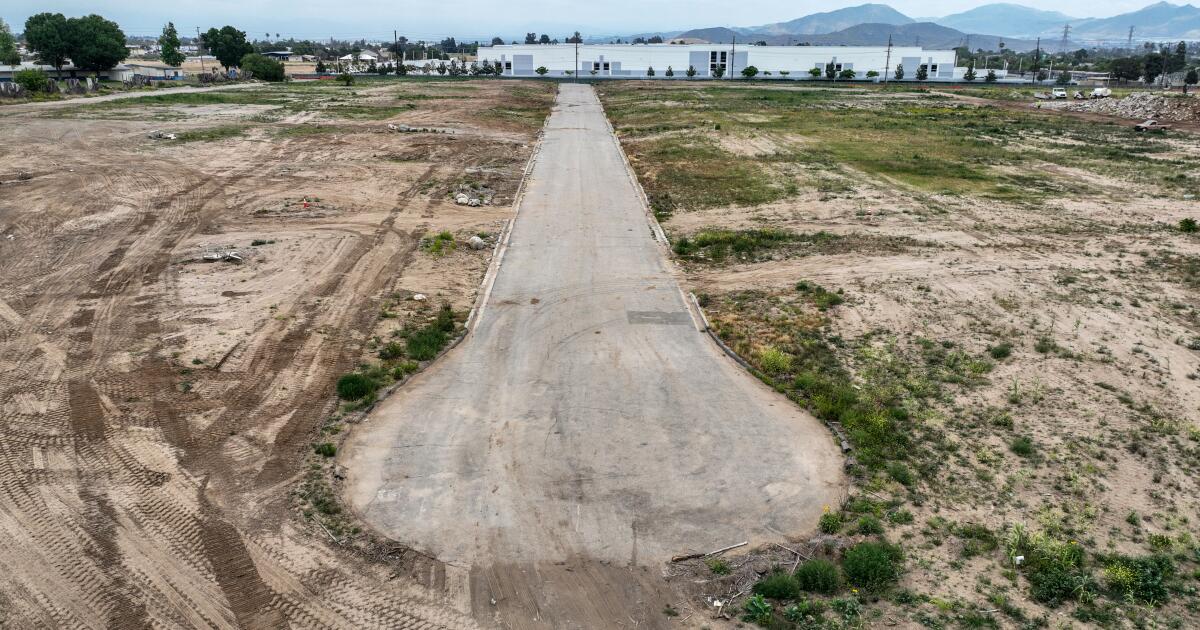Benjamin and Christine Granillo purchased their 2.25-acre property in San Bernardino County 4 a long time in the past. They constructed their residence by hand and surrounded it with a lush grove of avocado, orange and lemon bushes.
“We thought we’d be right here for the remainder of our life,” Christine Granillo, 77, mentioned as she tended to her bushes on a latest afternoon.
However their neighborhood in unincorporated Bloomington is quickly remodeling, as builders convert the ten Freeway and its adjoining communities right into a logistics hall connecting items shipped into Southern California ports with internet buyers throughout the nation. An industrial actual property firm based mostly in Orange County is demolishing 117 houses and ranches in rural Bloomington to make method for greater than 2 million sq. toes of warehousing house. The challenge will function yet one more distribution middle devoted to storing and transferring the merchandise customers need delivered to their doorsteps.
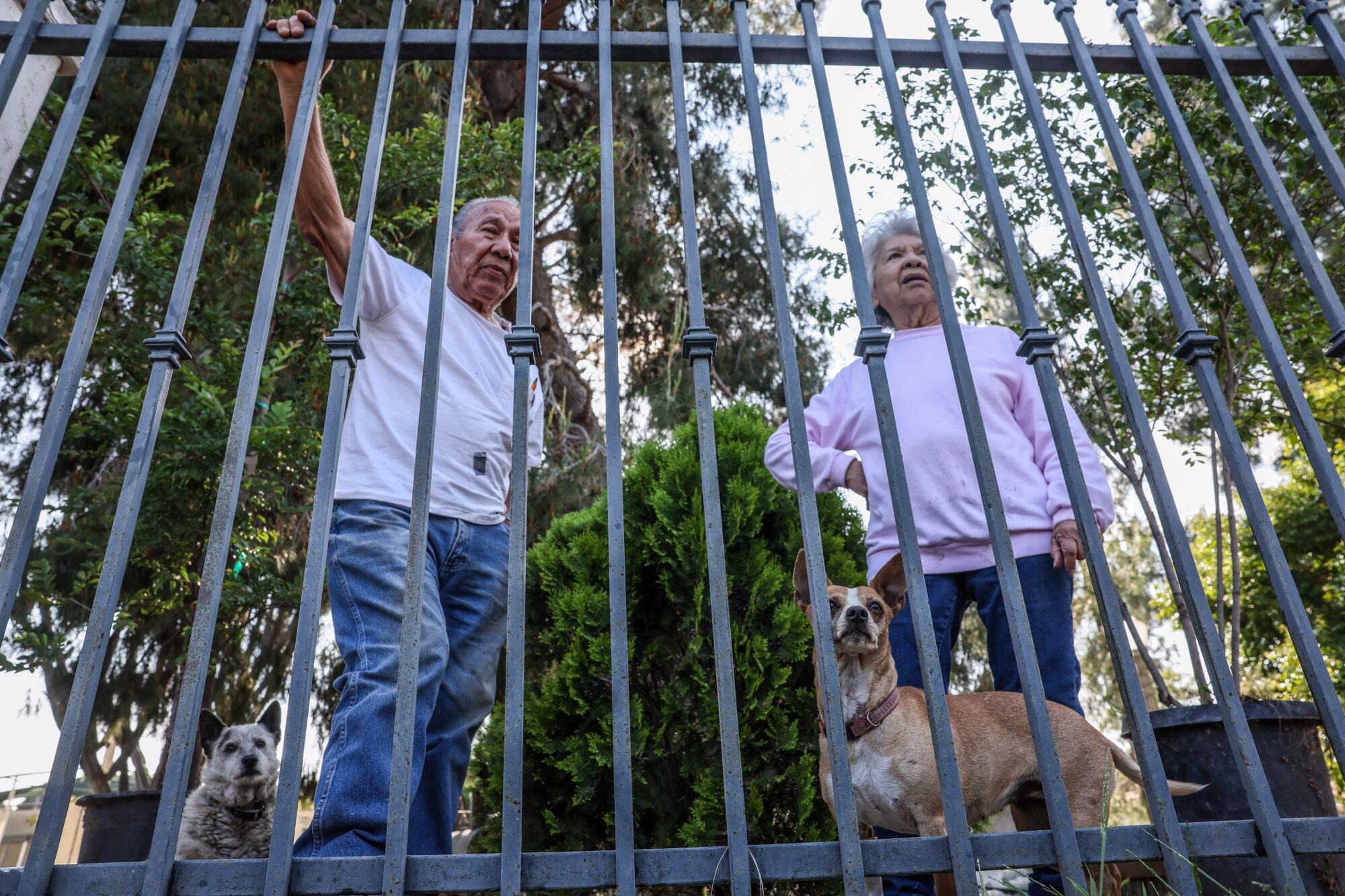
Benjamin and Christine Granillo, who constructed their residence by hand in rural Bloomington, will quickly look out on a sprawling on-line success middle.
All of the neighbors throughout the road from the Granillos bought their houses to the developer, and plenty of have already been bulldozed. The Granillos opted to not promote — and now look out their stately entrance gate on the rubble, quickly to be supplanted with a 479,000-square-foot success middle. Their road will turn into a busy truck route. Subsequent door will probably be a parking zone with lots of of truck and trailer stalls.
Christine Granillo mourns the lack of her neighbors and her view of the San Bernardino Mountains. However, she added, “What are you able to do about it? There’s actually nothing you are able to do about it.”
In November 2022, San Bernardino County supervisors voted 4-0 to approve the Bloomington Enterprise Park, a 213-acre industrial park that guarantees to deliver a number of thousand jobs to Bloomington, a majority Latino neighborhood of 23,000 residents.
The deal got here with trade-offs acquainted to the Inland Empire communities being requested to shoulder the distribution facilities integral to America’s on-line purchasing behavior: An environmental impression report discovered the event would have “important and unavoidable” impacts on air high quality. However it will deliver jobs to a working-class neighborhood in want of them, and Howard Industrial Companions has pledged to supply thousands and thousands of {dollars} in infrastructure enhancements: new streets with site visitors lights and sidewalks; a contemporary sewer system in an space that also depends on growing old septic methods.
And since the warehouse challenge can be about 50 toes from Zimmerman Elementary College, the developer agreed to pay $44.5 million to the Colton Joint Unified College District in a land swap that may usher in a state-of-the-art college close by.
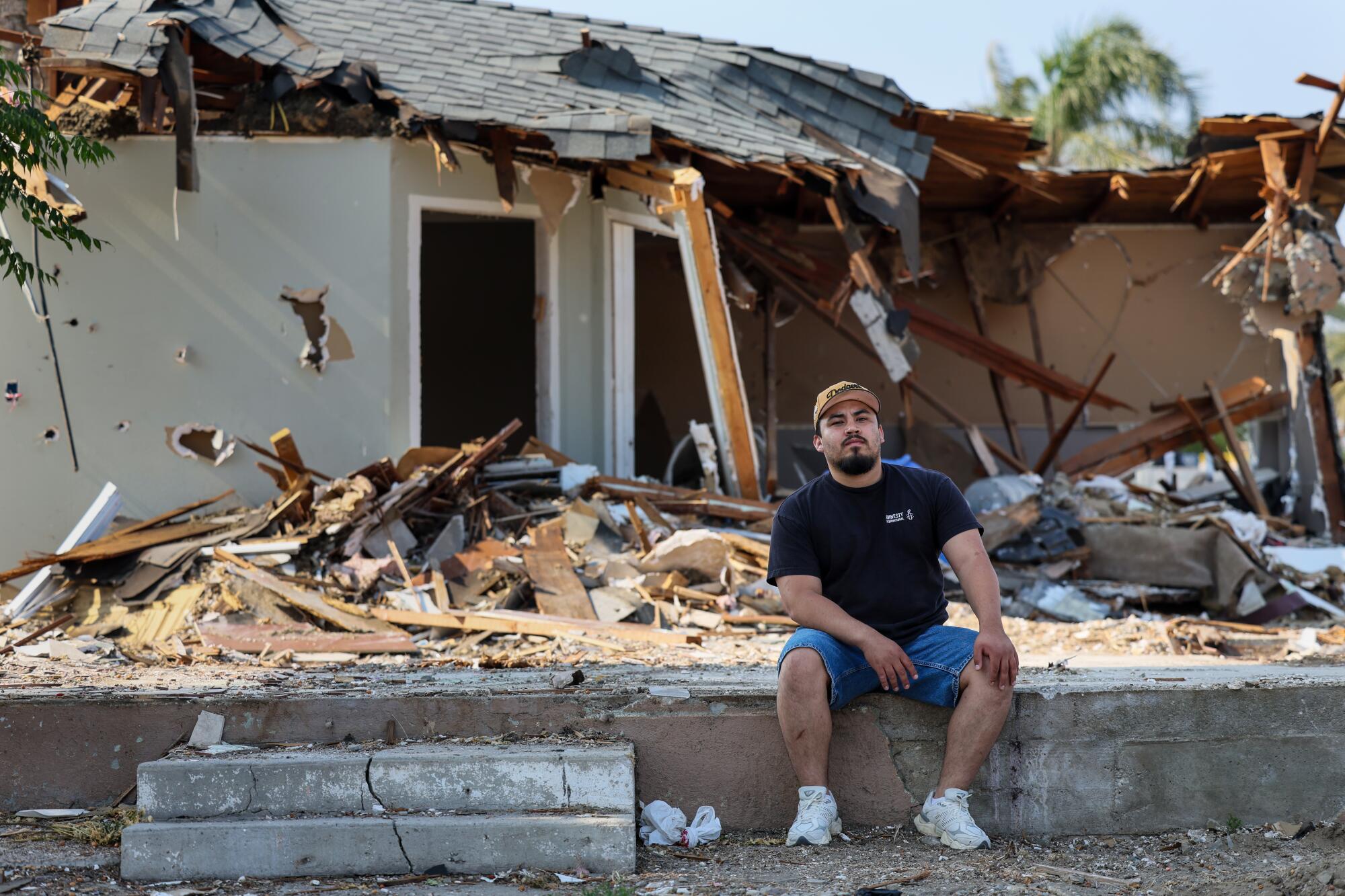
Joaquin Castillejos, with the Heart for Neighborhood Motion and Environmental Justice, advocates for residents whose neighborhoods are focused for warehouse tasks. However he mentioned persons are feeling the impression of years of poor planning.
Gary Grossich, a member of Bloomington’s Municipal Advisory Council, really useful that supervisors help the event. Surrounding cities like Rialto and Fontana are embracing warehouse growth, he mentioned, and this was a chance for Bloomington to reap the advantages of a booming business.
“The warehouse business was the recent market,” he mentioned, “and that was the one method that myself and others might see that we have been going to get to the better good, which is to get extra sheriff’s deputies, extra public security, extra companies for our neighborhood and finally steadiness our books.”
Mike Tunney, vp of growth at Howard Industrial Companions, mentioned the developer shares these targets. “Overcoming these kinds of challenges and alternatives are the elemental tenets of our growth philosophy,” Tunney mentioned.
However the challenge has left Bloomington fractured, with a stinging sense of winners and losers: Many who bought their houses say they bought an excellent worth and have been completely happy to maneuver on, whereas lots of the neighbors left behind see a future with extra concrete and semi-trailers and a hollowing out of the neighborhood’s rural tradition.
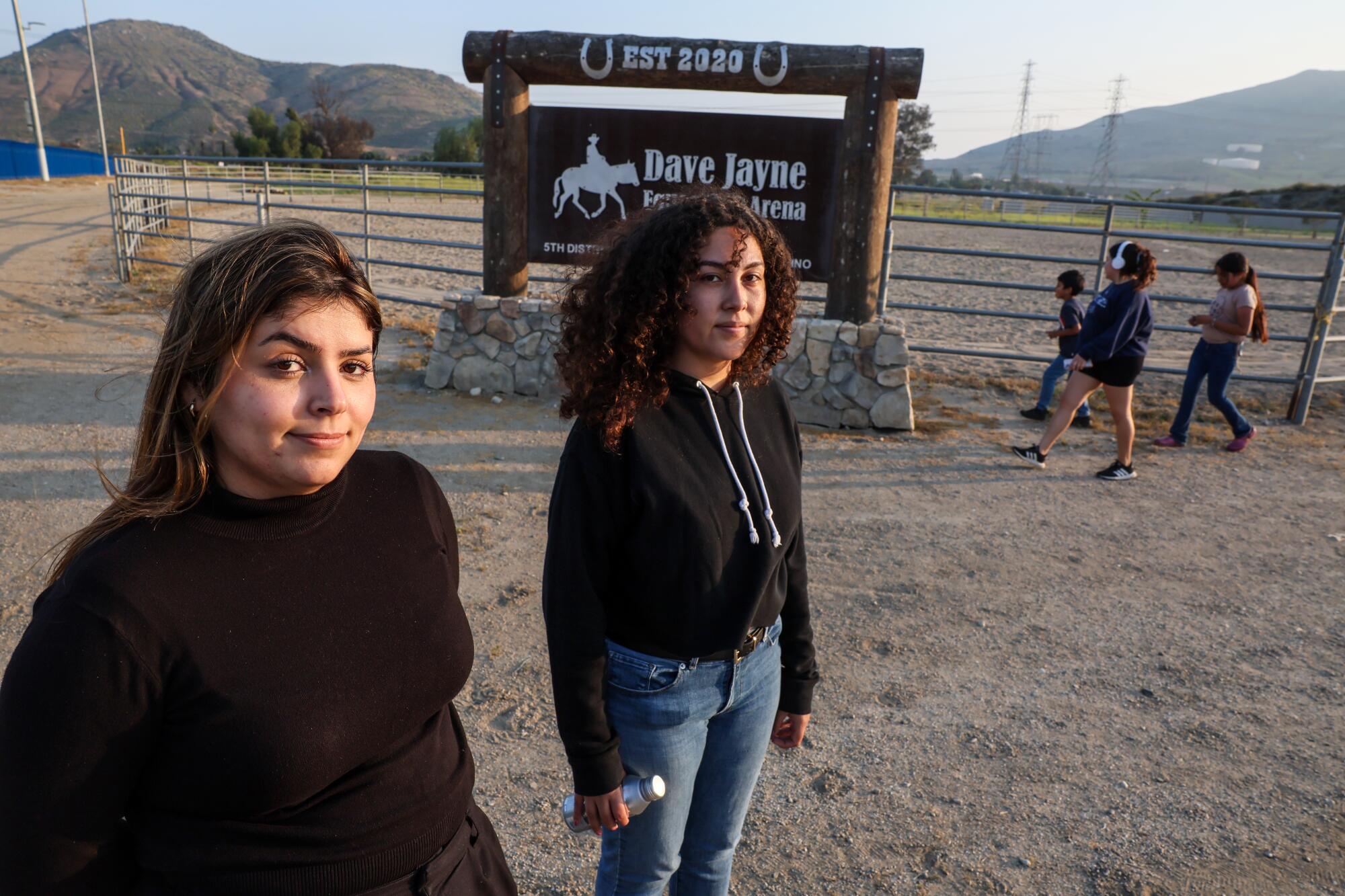
Esmeralda Tabares, left, calls the conversion of rural neighborhoods to industrial developments “only a full shift within the tradition and way of life” of Bloomington.
Esmeralda Tabares, 23, a part of a bunch known as Involved Neighbors of Bloomington, described the transition from rural residential to industrial growth as “only a full shift within the tradition and way of life we have now.” Many Bloomington residents journey horses; her household owns a plant nursery.
She questions why San Bernardino County is counting on a developer to supply the neighborhood with important infrastructure equivalent to sidewalks and sewers.
“It’s simply simpler for them to shift to a warehouse and say, ‘Nicely, we’re going to allow them to are available and take over your neighborhood,’” she mentioned. “However now what neighborhood is that going to be? As a result of they’re taking folks out, and shortly who’s going to go to the varsity? Who’s going to stay right here?”
Brokers related to Howard Industrial Companions approached Raquel Diaz a number of years in the past about promoting her residence in a Bloomington neighborhood a mile south of the ten Freeway with a proposal that wouldn’t undergo till the county accredited the challenge.
She and her household had bought their residence in 2012 for $140,000. It was the primary residence for her household of 5, she mentioned, they usually have been “tremendous excited.” However the three-bedroom home on Locust Avenue shortly turned a nightmare.
The home flooded every time it rained. It reeked of moisture, and she or he and her husband fearful about elevating younger youngsters amid mould.
Their road had no sidewalks, however that didn’t cease folks from rushing by of their vehicles. Accidents have been alarmingly widespread, she mentioned. Her youngsters have been forbidden from checking the street-side mailbox or taking out the trash.
“We ended up with a lemon of a home,” she mentioned. “We have been completely happy to be in Bloomington, and it simply didn’t find yourself understanding for us.”
By the point the county accredited the warehouse growth, residence costs throughout Southern California had skyrocketed. Diaz mentioned the developer inspired them to discover a residence they needed to purchase — even when it price above the value they’d initially negotiated — and to verify it was on a hill. The corporate would cowl the associated fee.
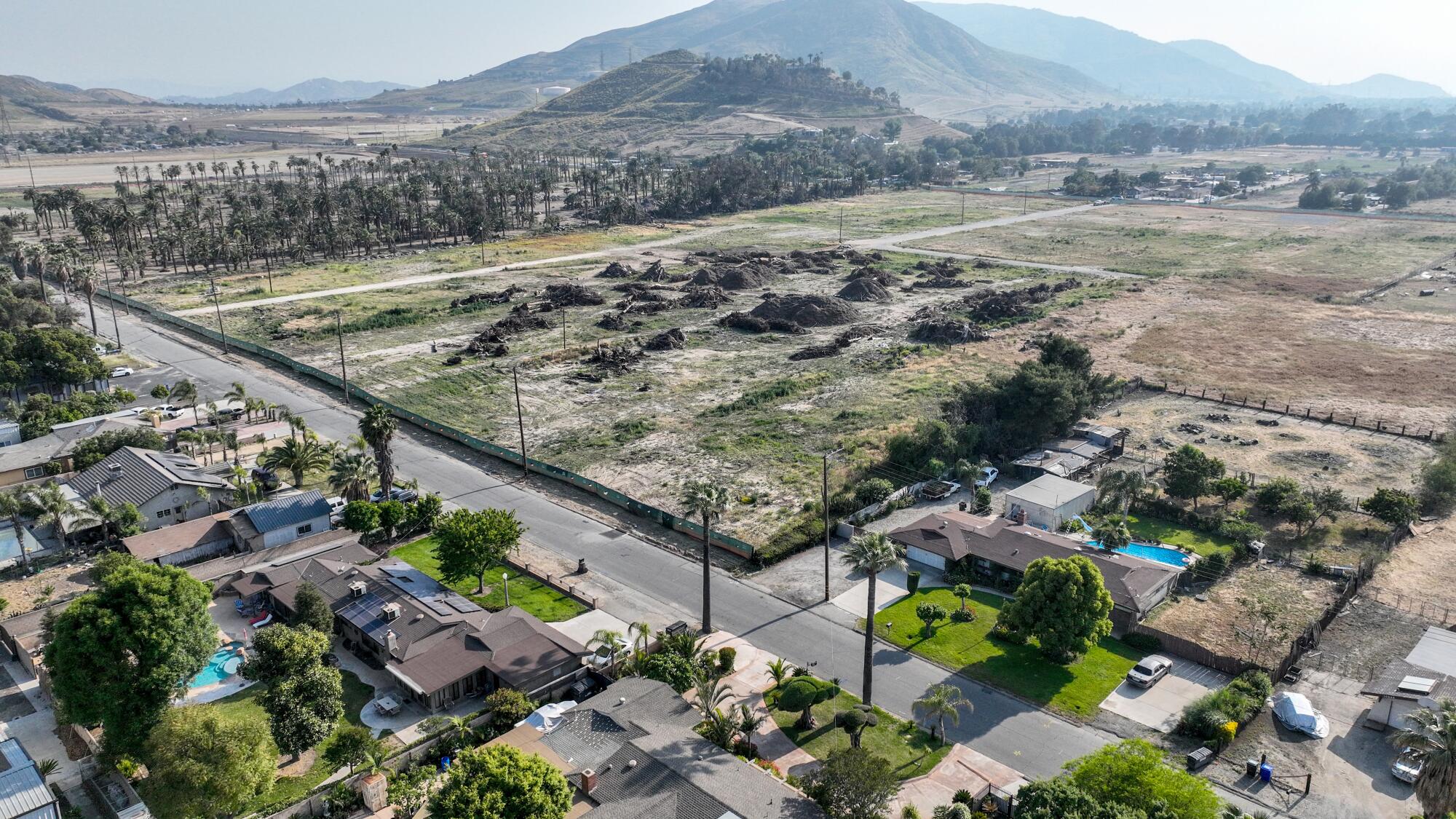
Unincorporated Bloomington is remodeling, as builders look to raze neighborhoods close to the ten Freeway to create a logistics hall devoted to on-line purchasing wants.
They chose a five-bedroom, five-bathroom residence in Highland, a close-by suburb on the base of the San Bernardino Mountains, and closed on the property in January 2023 for $1.05 million. The three,800-square-foot residence has a pool and views. It’s on a sewer system, and whereas their residential road doesn’t have sidewalks, the close by roads have sidewalks and bike lanes.
“It nonetheless feels unreal the place we ended up,” she mentioned. “It’s lovely. I utterly love the place I stay.”
Diaz has heard different residents say that householders have been harassed and pressured to promote. She is adamant that’s not the case.
“Nobody is forcing me out,” she mentioned. “It was a blessing to get the chance to have the ability to have a brand new begin.”
Carolina Rios additionally noticed the developer’s supply as a chance.
Rios and her household paid $225,000 for his or her Bloomington residence and lived there about 13 years. She has fond recollections of the three-bedroom home on Laurel Avenue: She threw her daughter’s quinceañera there, and she or he and her husband have been married within the yard.
However the home was previous, and as a substitute of storm drains, the houses on her road had pipes underneath the driveways that flowed into ditches. The road flooded each time it rained. They needed to stroll atop pallets and bricks to cross the yard.
“Throughout the road, their ditch was 24/7, 12 months a yr filled with water and mosquitoes and raccoons and snakes and all types of enjoyable wildlife to go to the zoo and take a look at,” she mentioned. “However not in my home, round my youngsters.”
She agreed to promote in 2016; she mentioned the developer adjusted the acquisition worth in 2023 — to $1.4 million — after the county accredited the challenge, in recognition of rising residence costs. In late December, she closed on a brand new home in Riverside with an additional bed room, a swimming pool and an enclosed patio. She paid $1.2 million in money.
She is aware of some persons are against warehouse growth, however she says the business is bringing good jobs. Her oldest kids, ages 27 and 24, each work at a FedEx warehouse in Bloomington, the place they’ve versatile hours and get frequent raises, she mentioned.

Jessie Ortiz practices roping abilities within the yard of his household’s Bloomington residence.
Whereas some householders seized on the chance to maneuver out of Bloomington, Felipe and Blanca Ortiz felt blindsided when their landlord agreed to promote the ranch residence they have been renting.
The Ortizes and their 4 kids have lived on the two-acre property for greater than a decade. They’ve maintained their household traditions from the Mexican state of Morelos, elevating horses, goats and chickens on their small property.
They beloved driving their horses by way of the hills behind their residence, and frequently traveled to different cities to journey their horses in parades, decked out in conventional Mexican cowboy and cowgirl apparel. They organized 100-horse processions as fundraisers for neighbors in want.
“It’s their total lives,” Felipe Ortiz mentioned, as he shared TikTok movies of his youngsters acting on horseback.
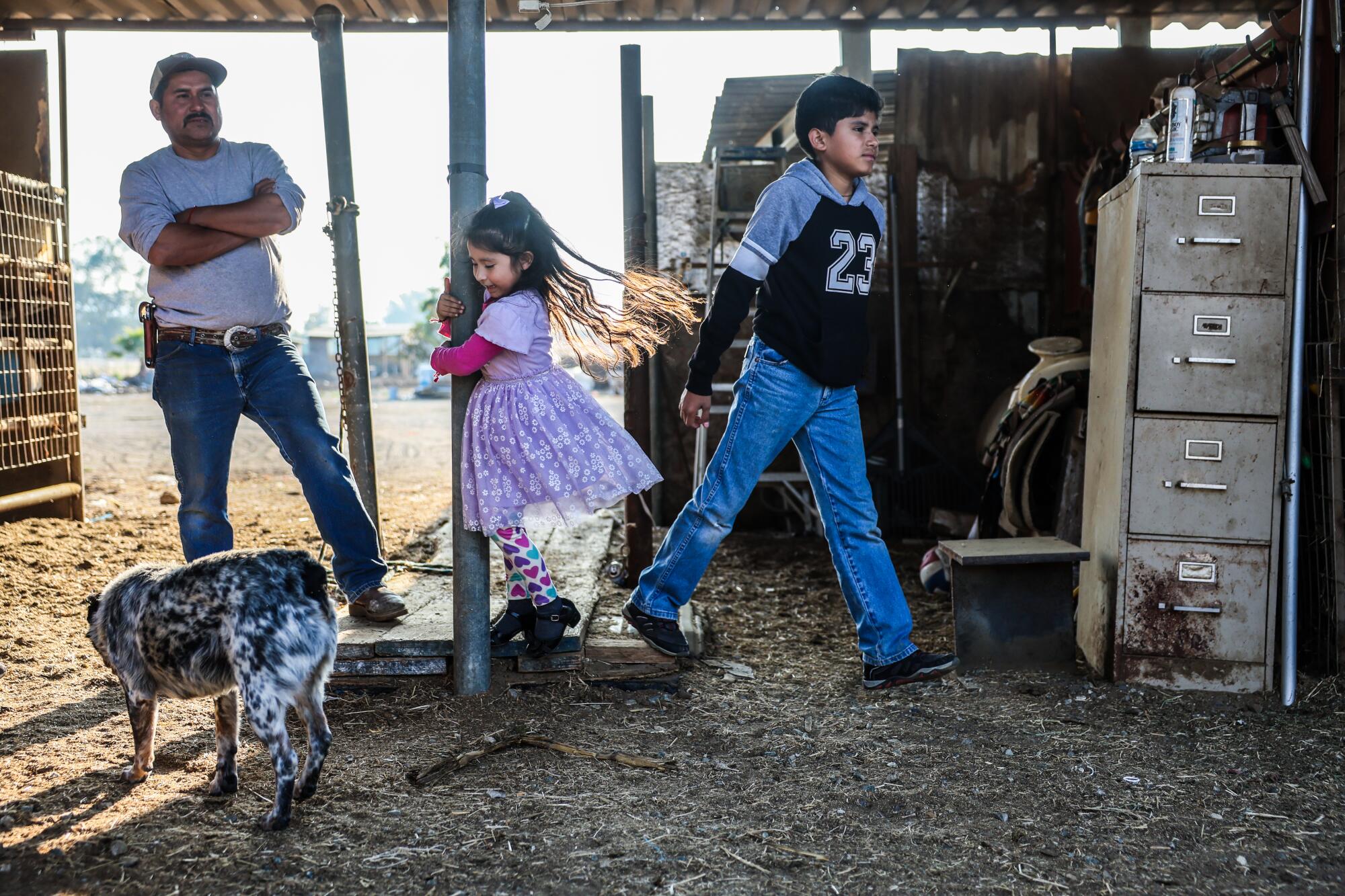
Felipe Ortiz and his household are being evicted from the ranch residence they’ve rented for greater than a decade.
In February, the household bought a discover informing them their rental settlement would finish in 60 days. It got here from an organization linked to Timothy Howard of Howard Industrial Companions — the one indication the household had that their rental residence had been bought.
That very same day, footage from the Ortiz household’s safety digicam exhibits an excavator flattening the chain hyperlink gate in entrance of the ranch. The 2 youngest Ortiz youngsters, ages 6 and 12, have been residence on the time. The household considered it as an act of intimidation.
Tunney, with Howard Industrial Companions, mentioned it was “regrettable” that the earlier proprietor didn’t disclose the sale to the Ortiz household.
“Moreover, it was not disclosed to us that there have been occupants on the property,” Tunney mentioned. “The incident with the excavator was inadvertent because the operator was scheduled to work at a close-by website and confused the addresses.”
A number of months later, the household continues to be residing within the residence, ready out the eviction course of. Ortiz says he’s struggling to seek out one other property that may accommodate the household of six and their eight horses. As their search wears on, he mentioned, his youngsters are traumatized. His youngest returns from college every day questioning if their residence has been knocked down.
“Daily, the machines cross by right here to knock down houses behind us,” Ortiz mentioned. “And also you’re left with the worry that they’re coming to knock down our home.”
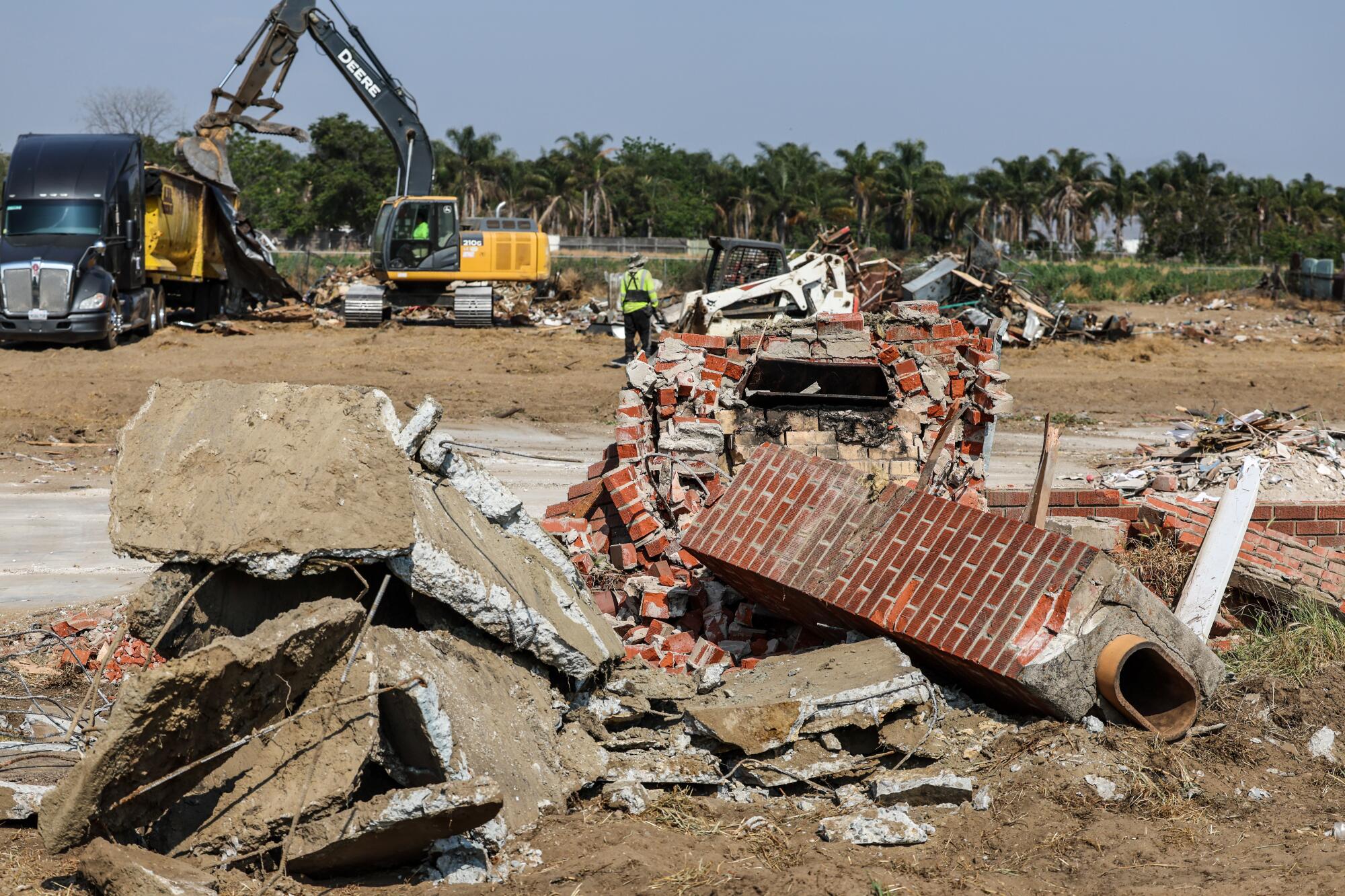
As houses are demolished in rural Bloomington to make method for a warehousing challenge, the neighbors who stay look out at rubble.
Because the demolitions proceed, a coalition of environmental teams has sued San Bernardino County and Howard Industrial Companions, attempting to halt the challenge. The lawsuit, alleging violations of state environmental and truthful housing legal guidelines, seeks to vacate the county’s approval and require a extra “significant” evaluation.
Adrian Martinez is deputy managing lawyer for Earthjustice, the group representing the plaintiffs. He known as their effort a key second in “the struggle towards the freight business and its disregard for public well being.”
“There are individuals who don’t need these warehouses of their communities they usually simply wish to be left with peace,” Martinez mentioned. “I believe the inflection level is this type of misguided notion that to present a neighborhood assets, it’s important to stuff hundreds of vans in the neighborhood and air air pollution. And there’s no place within the nation that this story is extra strong than the Inland Empire and Bloomington particularly.”
A listening to is scheduled for later this month in San Bernardino County Superior Courtroom.
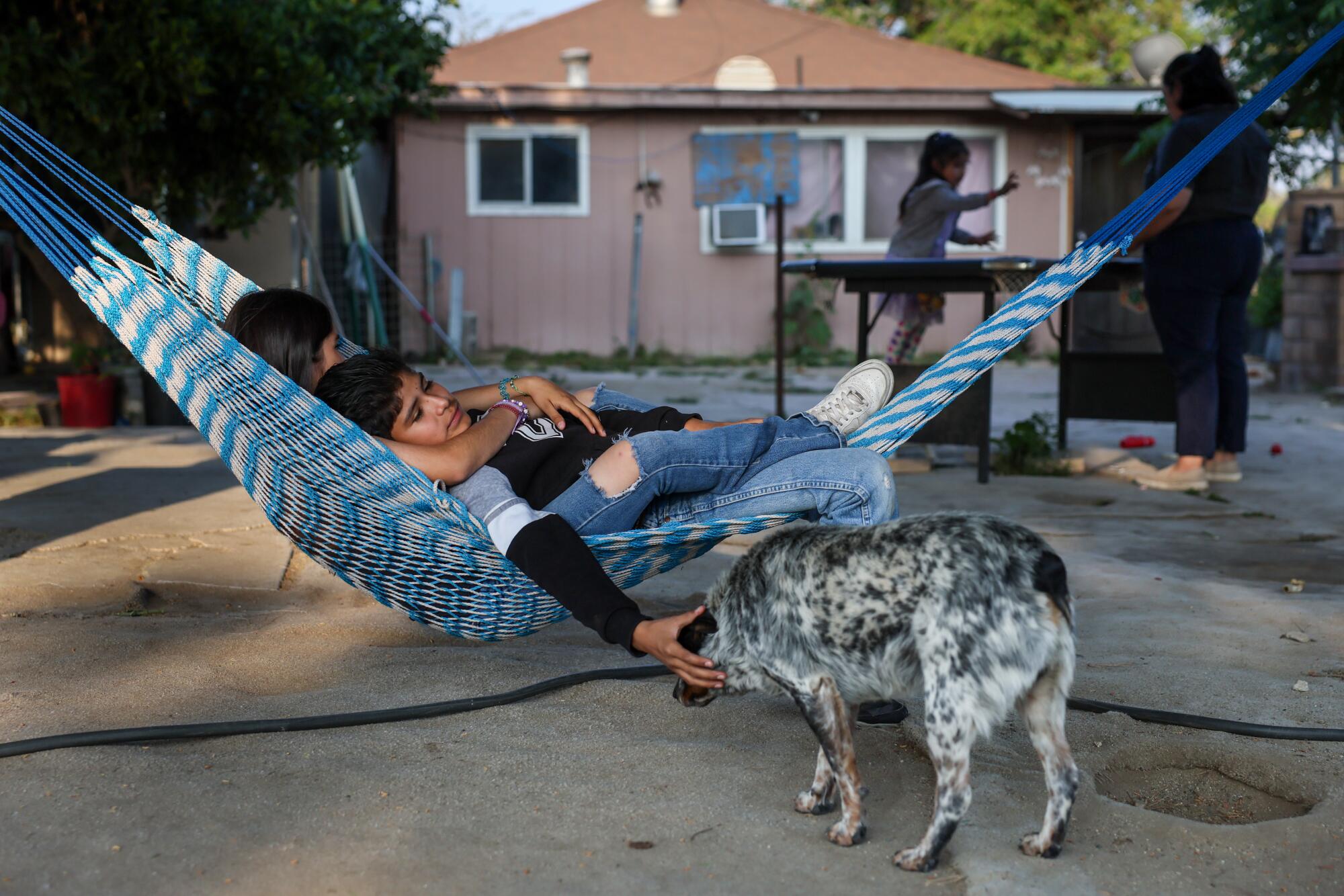
“On a regular basis, the machines cross by right here to knock down houses behind us,” Felipe Ortiz says of his household’s plight. “And also you’re left with the worry that they’re coming to knock down our home.”
In the meantime, only a couple miles away, residents in southeastern Bloomington are beginning to hear from builders inquisitive about constructing extra warehouses within the space.
Daniela Vargas, 24, mentioned her dad and mom purchased their home there greater than 20 years in the past. For her dad and mom, each Mexican immigrants, it’s a deep supply of satisfaction to personal a house they might cross right down to their 4 kids.
Vargas’ household raises chickens on their land, however the surrounding space is pockmarked with business. Only a brief drive from the household’s house is one other warehouse advanced, a railroad and the ten Freeway.
Lately, they’ve obtained cellphone calls and “strange-looking mail” from builders inquisitive about shopping for their residence, Vargas mentioned: “It seems to be like a examine that claims, ‘Right here’s X sum of money, name us to make it actual.’”
She mentioned her household doesn’t wish to depart, nevertheless it feels inevitable that their neighborhood would be the subsequent to remodel.
“Anybody that strikes out of Bloomington, it’s all legitimate reasoning,” Vargas mentioned. “My household is absolutely prideful. But when the choice comes that warehouses are going to be developed right here and everyone is leaving, we will’t stay with a lot air pollution round us, with a lot site visitors and with no actual neighbors or neighborhood facilities.”
This text is a part of The Occasions’ fairness reporting initiative, funded by the James Irvine Basis, exploring the challenges dealing with low-income employees and the efforts being made to deal with California’s financial divide.



